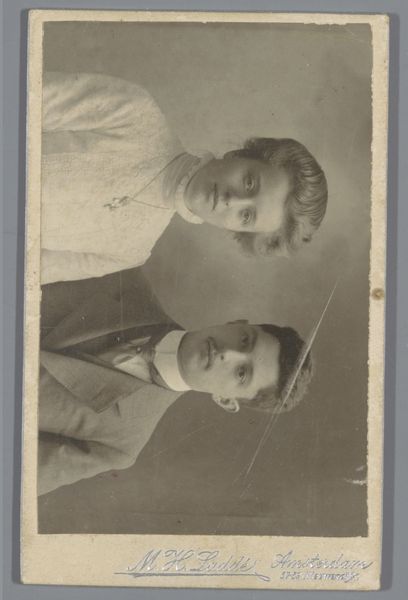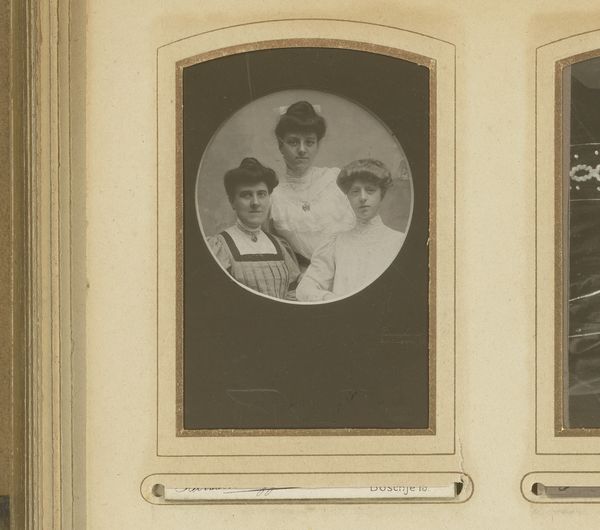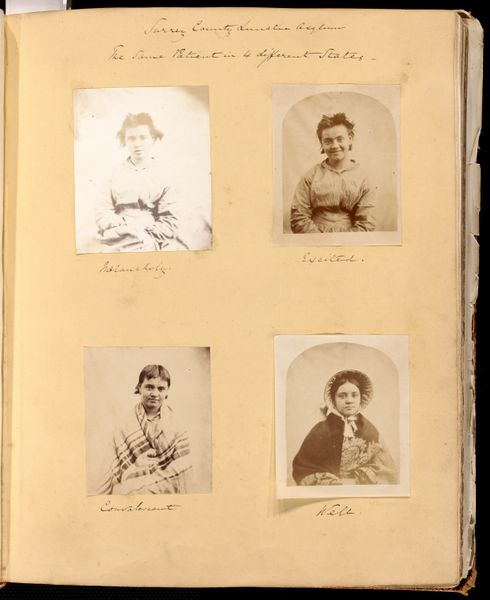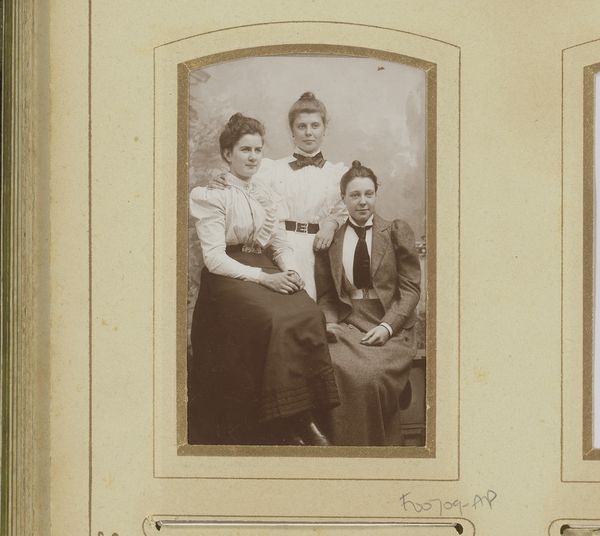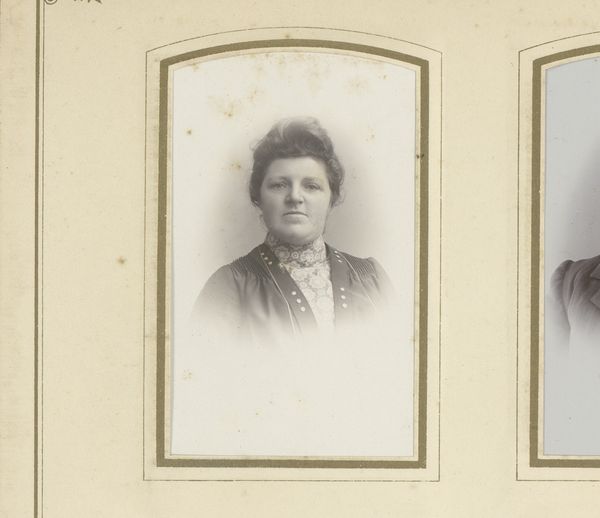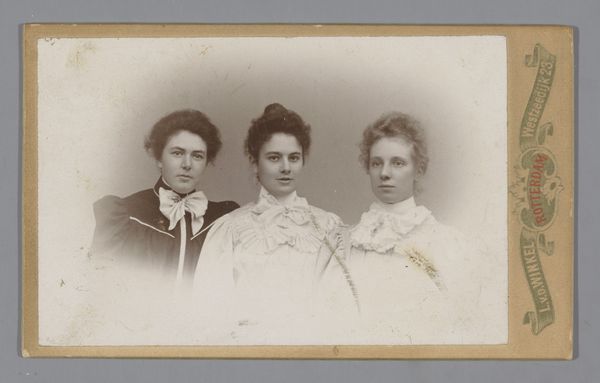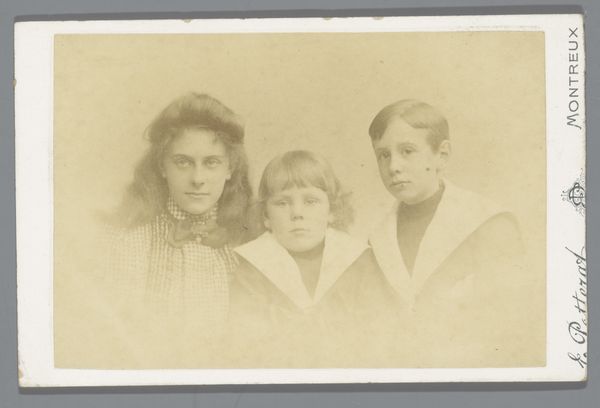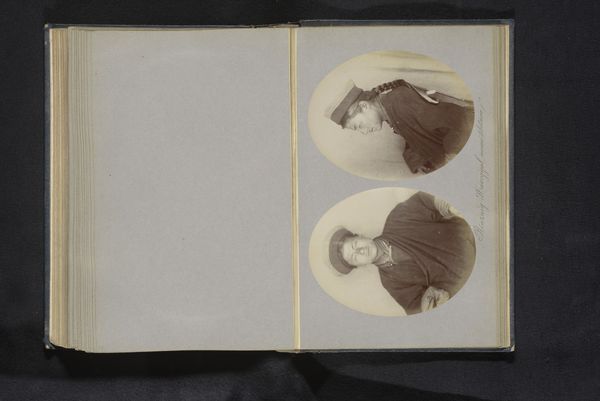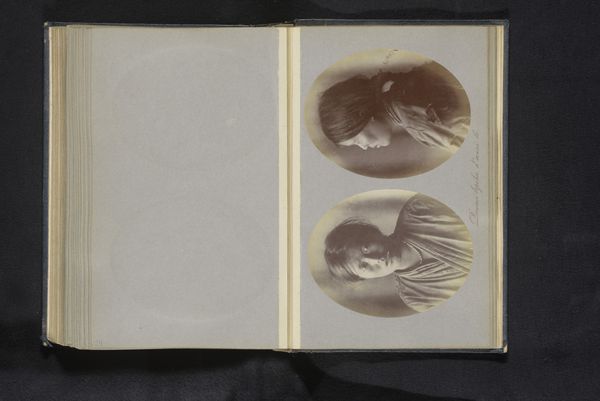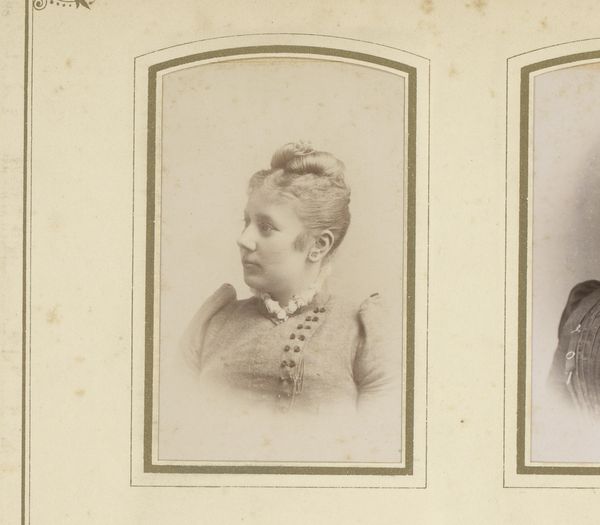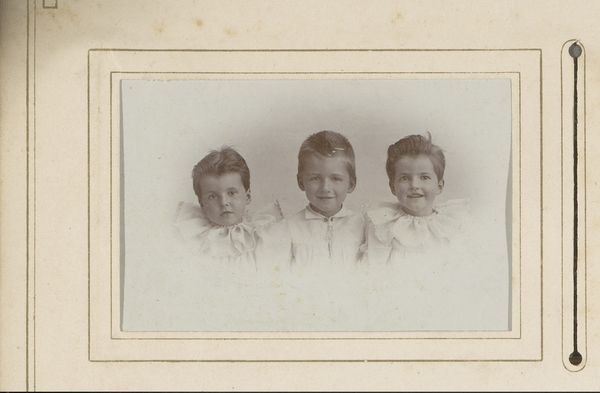
photography, gelatin-silver-print
#
portrait
#
pictorialism
#
photography
#
group-portraits
#
gelatin-silver-print
Dimensions: height 104 mm, width 65 mm
Copyright: Rijks Museum: Open Domain
Curator: Welcome. Here we have Machiel Hendricus Ladds’s, "Portrait of Three Unknown Women," a gelatin-silver print made sometime between 1892 and 1906. What strikes you first? Editor: The ghostly pallor, a sort of dreamlike quality. It is as though they're emerging from a fog or a distant memory, the tones soft and almost bleached out in places. Curator: Indeed, it is a wonderful example of Pictorialism where photography sought to emulate painting through soft focus and tonal manipulation. But also consider how the women are stacked one above the other. To me, it suggests layers of history, or perhaps three stages of a woman's life echoed in each face. Editor: Perhaps, but visually, this layering flattens the space. It makes the image less about individual likeness and more about form and composition. Their identical dresses suggest a uniformity and conformity. They aren't individuals but, more precisely, facets of one repeating subject. Curator: It’s interesting that you see conformity in the dresses. For me, it points to shared social status. Clothing then signified much more about one's position in the world. Perhaps it highlights their place in society. This repetition can give us an insight into their identities. Editor: Maybe so. I see a sophisticated visual interplay between light and dark here. The softness isn't just aesthetic; it’s structurally vital. Without those delicate gradations of tone, the composition could fall apart into just three heads floating. Curator: And yet, for a contemporary audience, do you think it invokes a feeling of loss? Of something obscured? The identity of these women is lost, which is not only true for those women portrayed in the photograph but a commentary about our memory. What we choose to leave and not. Editor: Yes, the photograph embodies a bittersweet quality. It preserves, but the distance introduced by the process and time also subtly erodes. Curator: It's a reminder of how the past both shapes and eludes us, made concrete through this singular photographic print. Editor: A perfect illustration of how aesthetic form and the historical, in a way, are bound to one another and work together.
Comments
No comments
Be the first to comment and join the conversation on the ultimate creative platform.
